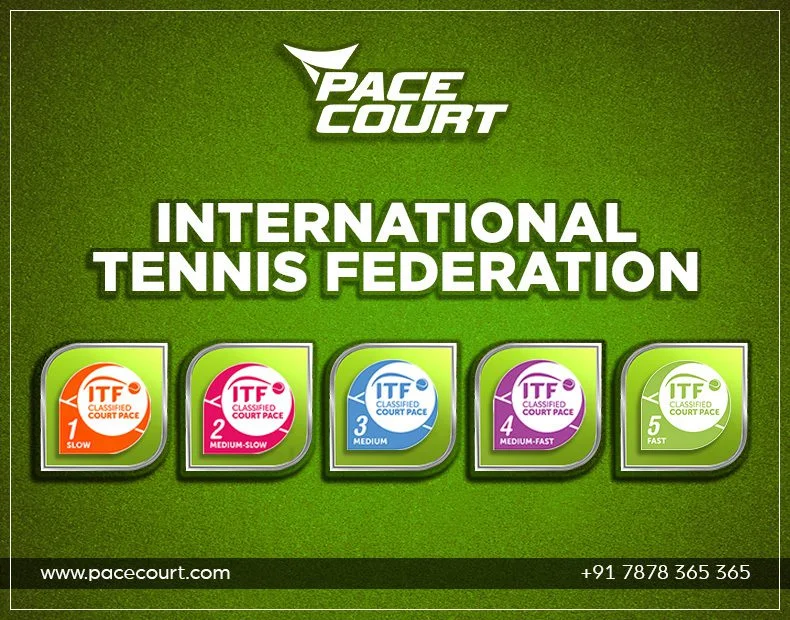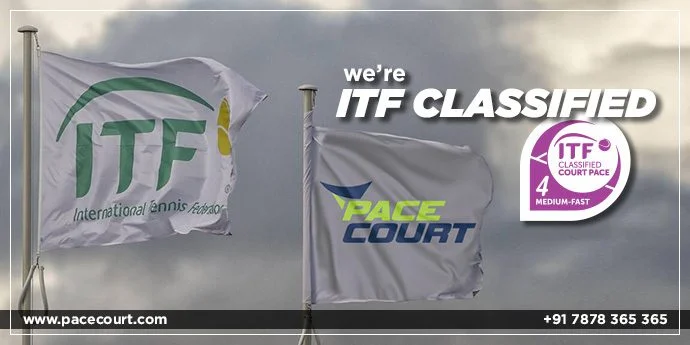The International Tennis Federation (ITF) is the governing body for tennis worldwide, established in 1913, headquartered in London, United Kingdom, and is responsible for organizing and regulating tennis events worldwide. The ITF is responsible for creating and implementing the rules and regulations of tennis, promoting tennis worldwide, and developing the sport at all levels. In this article, we will discuss the different types of tennis surfaces and their speeds, as pacecourt classified by the ITF.
Player Rankings
The ITF manages and oversees the player rankings for both men and women at the professional level. Rankings updated weekly and are crucial for determining tournament seedings and entries.
Tournament Levels
ITF tournaments are classified into different levels according to the amount of ranking points and prize money on offer. On the ITF World Tennis Tour, for example, tournaments split into categories like ITF $15k and $25k events, with the numbers representing the total prize money available at the tournament. These events provide a pathway for up-and-coming players to improve their rankings and progress to higher-level ATP and WTA events.
Court Surface Classification
The ITF also classifies court surfaces based on their pace. The Court Pace Classification Programme was introduced to standardize and regulate the speed of tennis courts used in professional competition also, Courts are classified into five categories ranging from slow to fast, based on their Court Pace Rating (CPR), which is a measure of how fast a ball rebounds off the surface.
Equipment Classification
The ITF has an Equipment Approval Programme that classifies and approves tennis equipment, including balls, rackets, also court surfaces, to ensure they meet the necessary standards for international competition.
ITF Classification in Junior Tennis
In junior tennis, the ITF employs a progressive tennis system called 'Tennis 10s', which uses different stages to classify junior players. These stages are red (for beginners), orange, and green also, each of which corresponds to a different level of skill and involves different court sizes, ball types, and racket sizes.

Types of Tennis Surface Speed Mediums:
- Medium: Medium courts typically made of clay or synthetic materials, and they offer a slower surface with a higher bounce. The ball takes longer to travel through the air also, players have more time to react to their opponent's shots. These courts often used in tournaments that played in warm, dry climates where the ball tends to bounce higher. The slower surface also allows players with a defensive playing style to excel.
- Slow surfaces - These are surfaces that have a slower ball speed and higher bounce, allowing for longer rallies and more defensive play. Examples of slow surfaces include clay and red clay.
- Medium-Slow: Medium-medium-slow courts are a hybrid between medium-slow and medium-fast courts. These courts provide a balance between speed and bounce also, which makes them suitable for players with different playing styles. Medium-medium-slow courts typically made of hard or synthetic materials, and they often used in tournaments that played in temperate climates.
- Medium-Fast: Medium-fast courts typically made of hard materials, such as concrete or asphalt. They offer a faster surface with a lower bounce, which makes it difficult for players to control the ball. These courts often used in tournaments that played in cooler climates also, where the ball tends to bounce lower
- Fast: Fast courts are the fastest surface and typically made of synthetic materials, such as carpet or acrylic. The surface offers a low bounce, which makes it difficult for players to control the ball. These courts often used in indoor tournaments, as they allow for faster gameplay and more exciting matches.
ITF-classified surfaces are important for players, coaches, and tournament organizers, as they help determine the style of play that will be most effective on a particular court surface also, Players must adapt their game to different surfaces to be successful, and tournament organizers must select the appropriate surface to provide fair and challenging competition.


